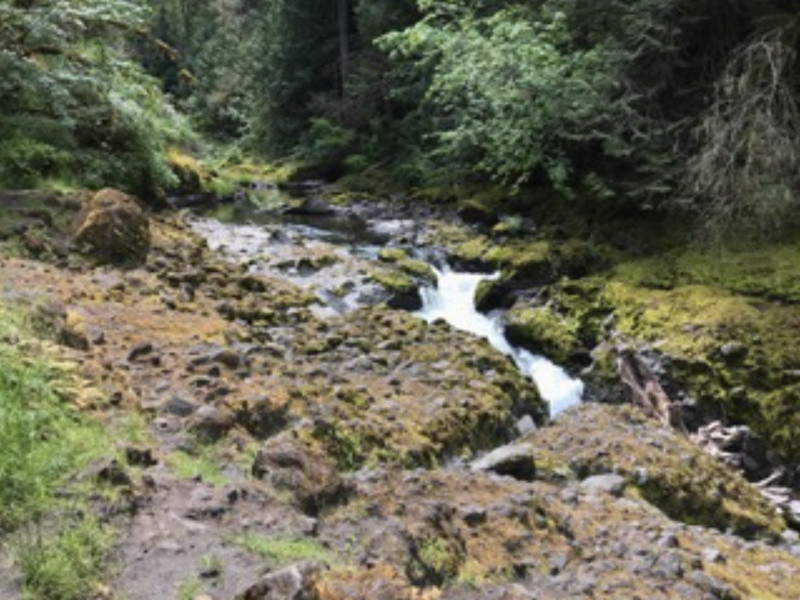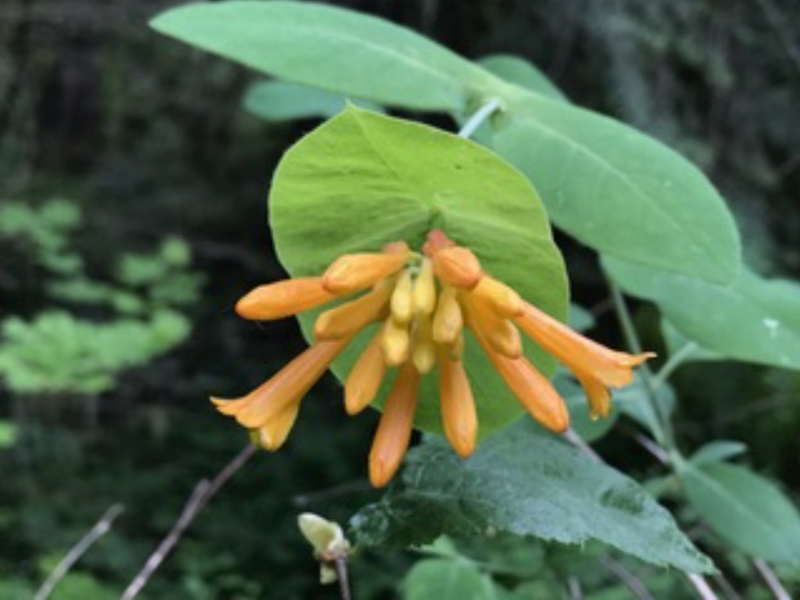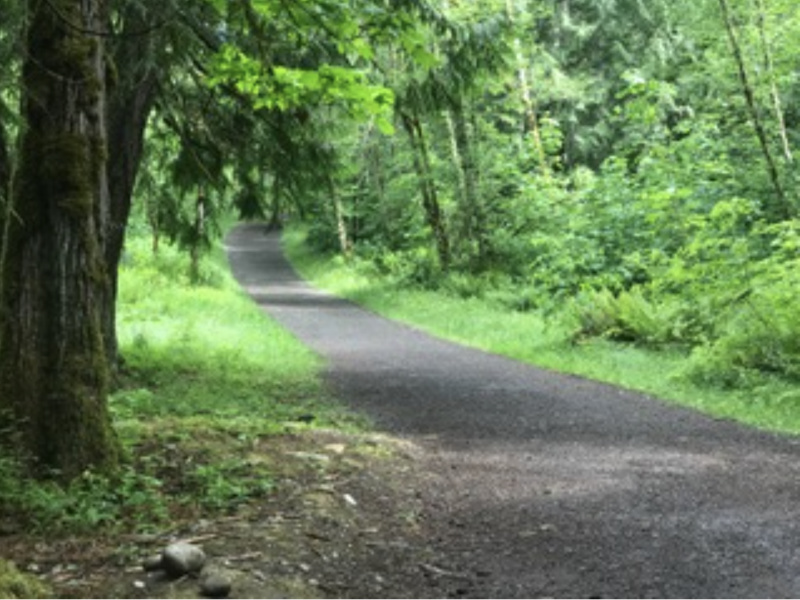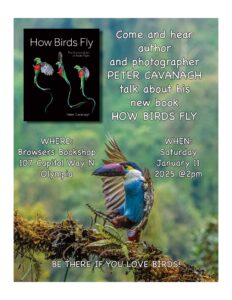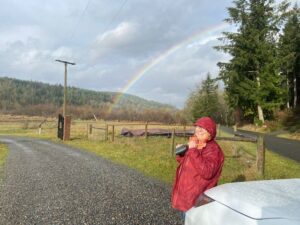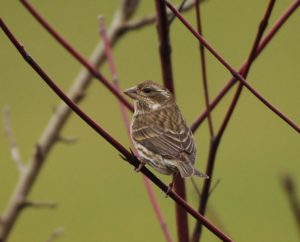Mary McCallum – June 7, 2021
Map: Deschutes Falls County Park Map; eBird: Deschutes Falls County Park
Deschutes Falls is a 155 acre Thurston County day-use park opened to the public in 2017. It is located at the end of Bald Hills Rd. about 15 miles southeast of Yelm (25005 Bald Hill Rd.). There are a myriad of driving routes to the park, some very scenic, from the Olympia area. Best to use your map or GPS and take your pick, either through Yelm or Rainier. In any case the drive is long; about an hour, more or less, from Olympia. The site was homesteaded in 1902 and later used during the 1920’s to 1940’s as an overnight campground for residents of the area.
Amenities:
- Park Hours: 9:00 AM to dusk
- Ample parking for more than a dozen cars. Caretaker’s housing adjacent to parking area provides security.
- Good signage.
- Trail map on website.
- Mostly wheel-chair accessible; the trails bordering the river and falls, however, are not. “Sani-Can” at parking area.
- Dogs allowed on leash.
- ADA packed bark/gravel trail descends a short distance to viewpoint of the Falls but is moderately steep and could be challenging on the return. Trail reportedly extends 1.2 mile along the river but becomes narrow and at times muddy past the official Viewpoints.
- Picnic tables and trashcans at the parking area.
- Benches for sitting at various points along the main trail and viewpoints.
- Historic cabin and interpretive plaque adjacent to the parking area at the beginning of the trail.
- Caution: Much of the ground at the viewpoints and along the river is sharp basalt bedrock and can be slippery and awkward to negotiate. This exposed bedrock is unique to the area hence the name “Bald Hills.”
Birding:
A good place to start looking for sparrows, hummingbirds and warblers is right at the parking area, which is surrounded by fields and the old fruit trees of the homestead.
Descending the main trail about 1/4 mile towards Deschutes Falls you pass by more open meadows and old fruit trees worthy of checking out (trailside bench) for sparrows, warblers, wrens and other songbirds. As we descended into the forest we heard Black-throated Gray Warblers and Osprey overhead.
At the bottom (about 1/4 mile?) veer to the right to the Viewpoint of the 27 ft falls (fenced for safety). Check the ledges directly below for American Dipper. Here the forest is an interesting mix of tall conifers in various stages of growth and decay and deciduous trees such as maple, alder and Oregon Ash and Oregon White Oak (Garry Oak) draped with long strings of the gray-green lichen Usnea longissima (Old Man’s Beard) indicative of high humidity and good air quality but becoming a species of conservation concern in some areas. Look for Sapsuckers and other Woodpeckers.
Back on the main trial, the second Viewpoint leads to pools and cascades of the river, another good place to find American Dipper. Again, the approach to the edge of the water over the basalt bedrock can be tricky but a lovely place to picnic.
Look for Black Swifts. We did not see any on our visit, however, a reputable eBird checklist from June of 2020 reported possibly Black Swifts flying overhead.
Most people turn around here but if you continue upriver along the trail, which at this point, becomes a regular dirt footpath through the woods, you pass by a lovely meadow on the left surrounded by tall trees (including a Quaking Aspen on the far side) and shrubs full of birdsong. If I were to bring a camp chair and sit, this would be the spot. We heard a lot more birds than we saw but we did confirm MacGillivray’s Warbler and Common Yellowthroat. Native plant enthusiasts will find a number of interesting plants here including Delphinium, Seablush (Plectritus), Monkey-flower, Oval-leaved Viburnum, Columbian Windflower and Gray’s Lovage.
The rough trail continues to meander upstream through the forest to the Park boundary with side paths to the river.
Summary:
After two hours and one mile of walking we observed 25 species of birds despite the cool clouds and threat of rain. The park offers good birding, lovely vistas, and interesting habitat. Expect 35 species on a good day with good ears. I will definitely go back. It’s just a long drive.
BEFORE YOU GO:
Before heading off for a birding adventure, here are some things to consider –
1. It’s always best to have a partner with you – both to maximize the joy and to minimize the risks. BHAS cannot ensure that these locations are totally safe.
2. Don’t forget to bring your mask and hand sanitizer. Have your mask handy and put it on when passing another person not in your party.
3. Leave valuables at home.
4. Check the weather and the bird reports before heading out. An easy way to check what birds have been seen is through Birder’s Dashboard http://birdingwashington.info/dashboard/. It is a simple way to research a species, place, or checklist.


